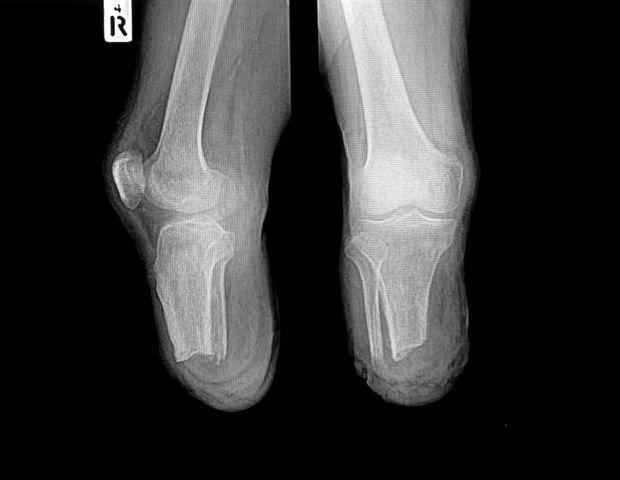AI Uncovers Hidden Bias in Amputation Rates Among Minority and Rural Patients
2 Sources
2 Sources
[1]
AI reveals hidden bias behind higher amputation rates in minority and rural patients
University of MarylandJul 10 2025 Why do rural adults and racial and ethnic minorities with vascular disease get major leg amputations more often? A new study out today in Epidemiology uses AI to solve the mystery, finding an unaccounted-for factor that researchers think points to implicit bias in the clinical decision-making process. The AI model allowed us to distinguish among the many reasons behind these much higher rates of amputation among certain groups of people with vascular disease. We found that, after accounting for everything else, people's unconscious biases are likely behind why some groups receive amputation instead of alternative treatment that preserves their limb." We hope our results will be a catalyst to create evidence-based guidelines that help vascular surgeons and other providers who make this life-changing decision do so objectively." Paula Strassle, lead author and assistant professor of epidemiology at UMD's School of Public Health More than 12 million adults in the US live with a vascular disease called Peripheral Artery Disease (PAD), a chronic circulation condition that restricts blood flow to the limbs. It results in leg pain, numbness and in severe cases, limb loss. About 10% of people with PAD develop Chronic Limb-Threatening Ischemia (CLTI) at which point either they receive a procedure to restore blood flow to their lower leg or their limb must be amputated. Revascularization is a surgical procedure that can save the limb, but it also requires intensive follow-up and is a relatively expensive surgical procedure. Vascular surgeons are also in short supply. After accounting for known differences in clinical presentation, the study found higher rates of amputation among Black, Hispanic, Native American, and white people in rural areas as well as among Black and Native American people in urban areas. After further accounting for differences in hospital and neighborhood resources, higher amputation rates persisted among Black, Hispanic, and Native American people in rural areas, and Black and Native American people in urban areas. "We found a substantial unexplained portion that would suggest an implicit bias in clinical decision-making occurring at the physician and hospital level," Strassle said. The study examined hospitalizations between 2017 and 2019 of people under 40 with PAD or CLTI, across five states (Florida, Georgia, Maryland, Mississippi and New York) using State Inpatient Databases from the Healthcare Cost and Utilization Project. Researchers programmed an AI model to consider a huge number of variables (70+) that contribute to known reasons for differences in leg amputations of people with PAD. Variables included clinical factors such as age and other health conditions, healthcare system capacity to perform revascularization and limb amputations, legal and regulatory climate, and the physical environment such as a person's distance to the nearest emergency room and ZIP code median income. "This AI model will allow us to easily assess intersectionality across race, sex, income and rurality, and offers us the ability to indirectly study hard-to-measure causes of disparities, like implicit bias and stereotyping," said Strassle. Limb-threatening conditions are often the result of decades of difficult-to-control diseases like diabetes, high cholesterol and nicotine dependence. For surgeons, who know these conditions lead to worse surgical outcomes, this can make the decision to pursue a complex limb-saving surgery even trickier. "As vascular surgeons we have surgical guidelines, but we don't have detailed guidelines to help us make the decision between amputating someone's leg and limb-saving surgery in patients who are not medically ready. Given the number and complexity of variables involved, we need more information describing the optimal treatment for each person in different conditions. We need to know we can perform a successful vascular operation, and also not increase the risk of dying," said Katharine McGinigle, a vascular surgeon, associate professor of surgery at the University of North Carolina and senior author of the paper. "There are so many medical, surgical, and social factors that contribute to disease progression, limb-loss and even death. Surgeons and others making treatment recommendations deserve evidence-based guidance that will help us avoid unconscious biases and make the right decision at the right time for each person based on their unique clinical and social needs. AI methods, similar to the one used in this research, can help us achieve that goal," said McGinigle. Strassle and McGinigle hope that their findings will inform comprehensive guidelines and health policies that help clinicians avoid unconscious bias and other unjustified differences in the quality of care provided, to safely save limbs of people living with advanced vascular disease. University of Maryland Journal reference: Strassle, P. D., et al. (2025). Disaggregating health differences and disparities with machine learning and observed-to-expected ratios: Application to major lower limb amputation. Epidemiology. doi.org/10.1097/ede.0000000000001892.
[2]
More rural, minoritized people get amputations -- AI gets closer to why
Why do rural adults and racial and ethnic minorities with vascular disease get major leg amputations more often? A new study out today in Epidemiology uses AI to solve the mystery, finding an unaccounted-for factor that researchers think points to implicit bias in the clinical decision-making process. "The AI model allowed us to distinguish among the many reasons behind these much higher rates of amputation among certain groups of people with vascular disease," said Paula Strassle, lead author and assistant professor of epidemiology at UMD's School of Public Health. "We found that, after accounting for everything else, people's unconscious biases are likely behind why some groups receive amputation instead of alternative treatment that preserves their limb." "We hope our results will be a catalyst to create evidence-based guidelines that help vascular surgeons and other providers who make this life-changing decision do so objectively." More than 12 million adults in the US live with a vascular disease called Peripheral Artery Disease (PAD), a chronic circulation condition that restricts blood flow to the limbs. It results in leg pain, numbness and in severe cases, limb loss. About 10% of people with PAD develop Chronic Limb-Threatening Ischemia (CLTI) at which point they either receive a procedure to restore blood flow to their lower leg or their limb must be amputated. Revascularization is a surgical procedure that can save the limb, but it also requires intensive follow-up and is a relatively expensive surgical procedure. Vascular surgeons are also in short supply. After accounting for known differences in clinical presentation, the study found higher rates of amputation among Black, Hispanic, Native American, and white people in rural areas as well as among Black and Native American people in urban areas. After further accounting for differences in hospital and neighborhood resources, higher amputation rates persisted among Black, Hispanic, and Native American people in rural areas, and Black and Native American people in urban areas. "We found a substantial unexplained portion that would suggest an implicit bias in clinical decision-making occurring at the physician and hospital level," Strassle said. The study examined hospitalizations between 2017 and 2019 of people under 40 with PAD or CLTI, across five states (Florida, Georgia, Maryland, Mississippi and New York) using State Inpatient Databases from the Healthcare Cost and Utilization Project. Researchers programmed an AI model to consider a huge number of variables (70+) that contribute to known reasons for differences in leg amputations of people with PAD. Variables included clinical factors such as age and other health conditions, health care system capacity to perform revascularization and limb amputations, legal and regulatory climate, and the physical environment such as a person's distance to the nearest emergency room and ZIP code median income. "This AI model will allow us to easily assess intersectionality across race, sex, income and rurality, and offers us the ability to indirectly study hard-to-measure causes of disparities, like implicit bias and stereotyping," said Strassle. Limb-threatening conditions are often the result of decades of difficult-to-control diseases like diabetes, high cholesterol and nicotine dependence. For surgeons, who know these conditions lead to worse surgical outcomes, this can make the decision to pursue a complex limb-saving surgery even trickier. "As vascular surgeons we have surgical guidelines, but we don't have detailed guidelines to help us make the decision between amputating someone's leg and limb-saving surgery in patients who are not medically ready. "Given the number and complexity of variables involved, we need more information describing the optimal treatment for each person in different conditions. We need to know we can perform a successful vascular operation, and also not increase the risk of dying," said Katharine McGinigle, a vascular surgeon, associate professor of surgery at the University of North Carolina and senior author of the paper. "There are so many medical, surgical, and social factors that contribute to disease progression, limb-loss and even death. Surgeons and others making treatment recommendations deserve evidence-based guidance that will help us avoid unconscious biases and make the right decision at the right time for each person based on their unique clinical and social needs. AI methods, similar to the one used in this research, can help us achieve that goal," said McGinigle. Strassle and McGinigle hope that their findings will inform comprehensive guidelines and health policies that help clinicians avoid unconscious bias and other unjustified differences in the quality of care provided, to safely save limbs of people living with advanced vascular disease.
Share
Share
Copy Link
A new study using AI reveals that implicit bias may be a significant factor in higher amputation rates for minority and rural patients with vascular disease, highlighting the need for evidence-based guidelines in clinical decision-making.
AI Uncovers Implicit Bias in Amputation Decisions
A groundbreaking study published in Epidemiology has employed artificial intelligence to investigate the disparities in amputation rates among patients with vascular disease. The research, led by Paula Strassle from the University of Maryland's School of Public Health, reveals that implicit bias may play a significant role in clinical decision-making, particularly affecting minority and rural patients
1
2
.The Scope of the Problem
Peripheral Artery Disease (PAD) affects over 12 million adults in the United States, with about 10% developing Chronic Limb-Threatening Ischemia (CLTI). These conditions can lead to severe outcomes, including limb loss. The study focused on hospitalizations between 2017 and 2019 across five states, examining cases of PAD and CLTI in patients under 40
1
.AI Model and Methodology
Researchers programmed an AI model to analyze over 70 variables contributing to differences in leg amputations. These variables included:
- Clinical factors (age, health conditions)
- Healthcare system capacity
- Legal and regulatory climate
- Physical environment (distance to emergency rooms, ZIP code median income)
This comprehensive approach allowed for a nuanced examination of intersectionality across race, sex, income, and rurality
2
.Key Findings

Source: News-Medical
After accounting for known clinical differences and variations in hospital and neighborhood resources, the study found persistently higher amputation rates among:
- Black, Hispanic, and Native American people in rural areas
- Black and Native American people in urban areas
These findings suggest a "substantial unexplained portion" that points to implicit bias in clinical decision-making at both physician and hospital levels
1
.Implications for Clinical Practice

Source: Medical Xpress
The study highlights the complexity of decision-making in vascular surgery. As Dr. Katharine McGinigle, a vascular surgeon and senior author of the paper, explains:
"As vascular surgeons, we have surgical guidelines, but we don't have detailed guidelines to help us make the decision between amputating someone's leg and limb-saving surgery in patients who are not medically ready"
2
.The researchers hope their findings will lead to the development of comprehensive, evidence-based guidelines that help clinicians avoid unconscious biases and make more objective decisions
1
.Related Stories
The Role of AI in Healthcare Equity
This study demonstrates the potential of AI in addressing healthcare disparities. By uncovering hidden biases and providing data-driven insights, AI can contribute to more equitable healthcare outcomes. As Strassle notes:
"This AI model will allow us to easily assess intersectionality across race, sex, income and rurality, and offers us the ability to indirectly study hard-to-measure causes of disparities, like implicit bias and stereotyping"
2
.Future Directions
The researchers aim for their findings to inform health policies and guidelines that promote objective decision-making in vascular surgery. By addressing unconscious biases and unjustified differences in care quality, they hope to improve outcomes for people living with advanced vascular disease, particularly those from minority and rural communities
1
2
.References
Summarized by
Navi
[1]
[2]
Related Stories
Researchers Call for Standardization of Race and Ethnicity Data in Medical AI to Address Bias
10 Jun 2025•Health

AI in Medicine: Study Reveals Socioeconomic Bias in Treatment Recommendations
08 Apr 2025•Health

Mount Sinai Researchers Develop AEquity: A Tool to Combat Bias in Healthcare AI
05 Sept 2025•Health

Recent Highlights
1
Google launches Gemini 3 Flash as default AI model, delivering speed with Pro-grade reasoning
Technology

2
OpenAI launches GPT Image 1.5 as AI image generator war with Google intensifies
Technology

3
OpenAI launches ChatGPT app store, opening doors for third-party developers to build AI-powered apps
Technology





